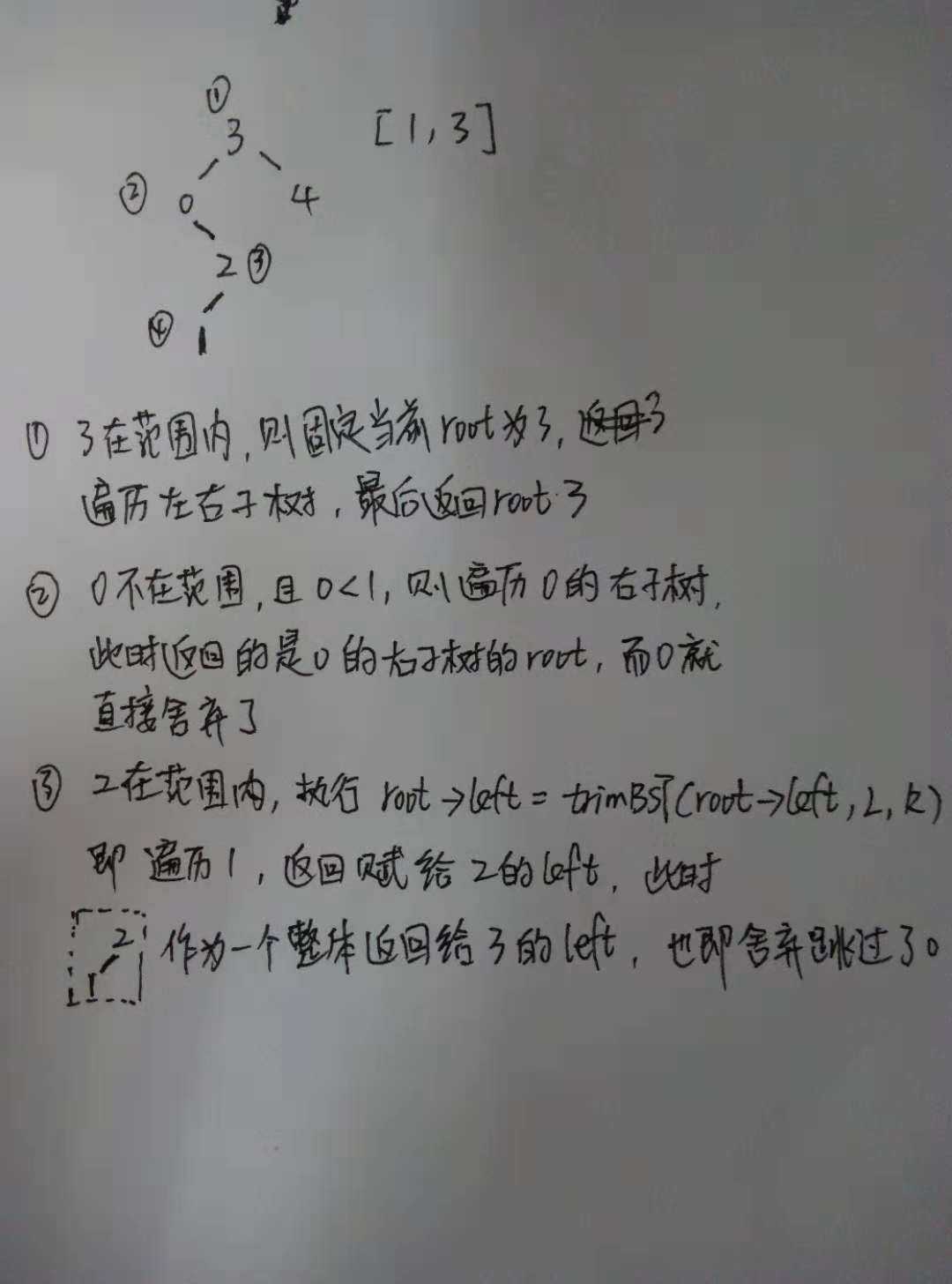标签:xpl lan nod src 规则 inpu free recursion 贪心思想
Input: [4,2,3] Output: True Explanation: You could modify the first4to1to get a non-decreasing array.递增
思路:贪心思想,找异常值,存在两个以上则返回false。如果当前的值比前一的值小,并且也比前两的值小,此时只需更改当前值,而不更改前两个值。
更改规则是用前一的值代替当前值。
两种情况
例如: 2 2 1 -》 2 2 2
0 2 1 -》 0 1 1
bool checkPossibility(vector<int>& nums) { int cnt = 0; //如果存在两个以上的异常值则直接返回false for(int i = 1; i < nums.size() && cnt<=1 ; i++){ if(nums[i-1] > nums[i]){ //存在异常值 cnt++; if(i-2<0 || nums[i-2] <= nums[i])nums[i-1] = nums[i]; //i-2处理第一个边界值,这种||技巧经常用到 else nums[i] = nums[i-1]; //have to modify nums[i] } } return cnt<=1; }
Input:
3
/ 0 4
2
/
1
L = 1
R = 3
Output:
3
/
2
/
1
The code works as recursion. If the root value in the range [L, R] we need return the root, but trim its left and right subtree; else if the root value < L because of binary search tree property, the root and the left subtree are not in range; we need return trimmed right subtree. else similarly we need return trimmed left subtree. Without freeing memory class Solution { public: TreeNode* trimBST(TreeNode* root, int L, int R) { if (root == NULL) return NULL; if (root->val < L) return trimBST(root->right, L, R); if (root->val > R) return trimBST(root->left, L, R); root->left = trimBST(root->left, L, R); root->right = trimBST(root->right, L, R); return root; } };

总结:树的遍历bfs,一般结构:
当前root
////////////////////////////
中间逻辑,比如深一层的遍历
///////////////////////////
对当前root进行操作,例如左右边子树的赋值操作
标签:xpl lan nod src 规则 inpu free recursion 贪心思想
原文地址:https://www.cnblogs.com/hotsnow/p/10075662.html